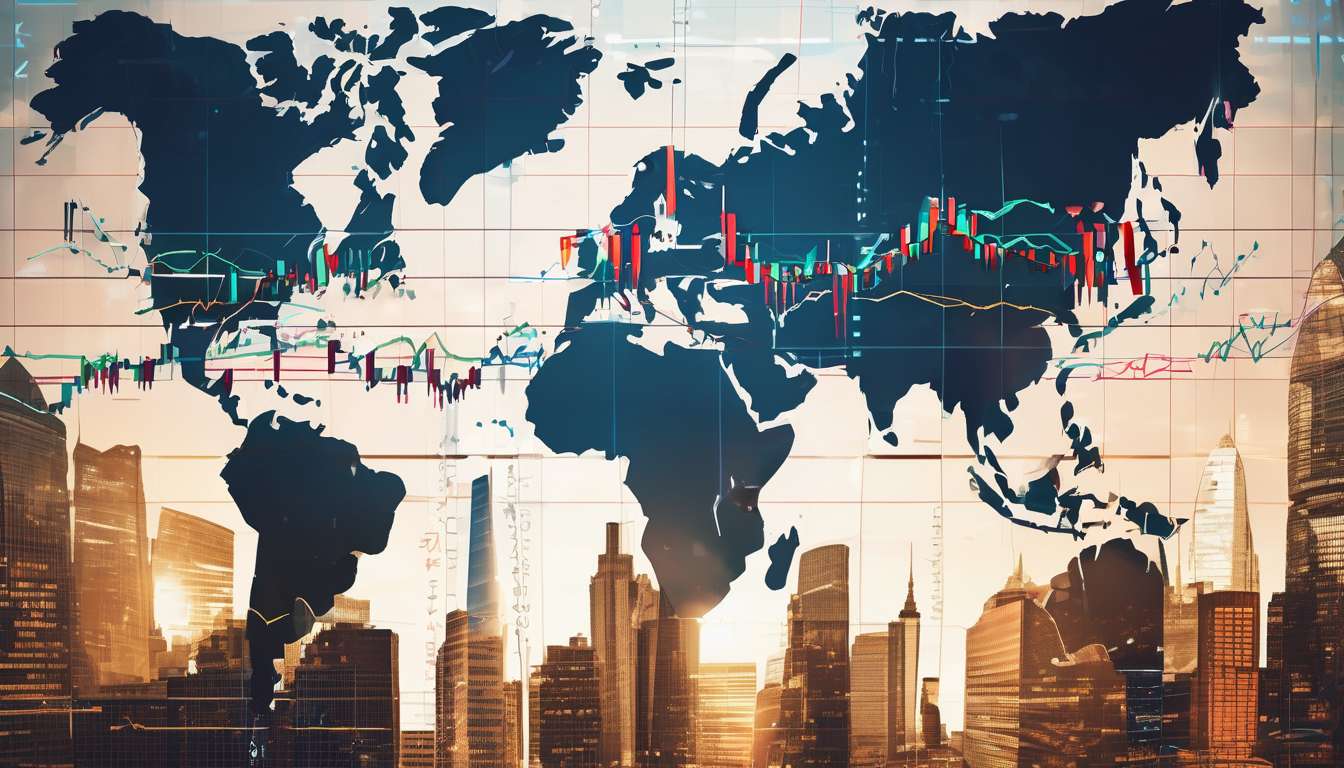As we step into the ever-changing world of seasonal trends, we find ourselves at the crossroads of opportunity and innovation. Together, we navigate the dynamic shifts in consumer behavior, fashion, and technology that define each season. In this journey, we are not mere observers; we are active participants, seeking to understand and anticipate the nuances that drive these trends.
Our collective curiosity fuels our desire to explore diverse perspectives and angles that can enhance our understanding and application of seasonal shifts. This article presents nine useful angles to review, offering insights that are both timely and relevant.
With each angle, we delve deeper into the factors that shape our environment and influence our decisions:
-
Nature’s Subtle Cues: Observing changes in the natural world that signal shifts in trends.
-
Fashion Runways: Analyzing bold statements and styles presented by designers.
-
Consumer Behavior: Understanding how purchasing patterns evolve with seasons.
-
Technological Advancements: Examining the impact of new tech on seasonal trends.
-
Cultural Influences: Considering how cultural shifts contribute to changing trends.
-
Economic Factors: Assessing how economic conditions influence seasonal preferences.
-
Social Media Trends: Tracking the role of digital platforms in shaping trends.
-
Retail Strategies: Exploring how retailers adapt to seasonal changes.
-
Global Perspectives: Understanding how trends vary across different regions.
By examining these trends through a multifaceted lens, we equip ourselves with the knowledge to adapt and thrive in a world of constant change.
Nature’s Signs
Nature’s signs, like the vibrant colors of autumn leaves and the arrival of migratory birds, alert us to the changing seasons. These natural indicators serve as a reminder of the inherent seasonality in our environment.
We observe how trends in weather patterns and wildlife behavior influence our lives and activities. As seasons shift, they shape everything from the food we eat to the clothes we wear, underscoring the powerful influence of nature’s cyclical patterns.
In understanding these trends, we gain insight into how nature’s timing impacts our routines and planning. For example:
- Farmers rely on seasonal cues to determine planting and harvesting times.
- Retailers adjust their inventory based on expected temperature changes and consumer demands.
By paying attention to these natural signals, we can better align our actions with the rhythms of the earth.
Recognizing these signs helps us anticipate changes and adapt accordingly, ensuring we remain in harmony with the world around us.
Embracing seasonality enriches our daily experiences and enhances our connection to nature.
Runway Insights
Fashion runways offer a glimpse into how designers interpret the changing seasons through innovative styles and trends. As we observe the collections each season, we notice the unique ways designers embrace seasonality. They use fabrics, colors, and silhouettes to reflect the transition from one season to another, influencing the broader fashion landscape.
Each runway show presents a curated vision that can dictate upcoming trends. Designers often experiment with textures and layering to capture the essence of the season, whether it’s the warm hues of fall or the light, breezy fabrics of spring. These choices not only set trends but also inspire other designers and retailers, ultimately influencing what ends up in our wardrobes.
Runway insights are crucial for understanding how fashion evolves. By examining these shows, we gain a deeper understanding of the creative processes that drive seasonal trends. This knowledge helps us anticipate what will be popular and allows us to appreciate the artistry behind fashion design’s seasonal influence.
Consumer Behavior Shifts
In recent years, we’ve observed a significant shift in consumer behavior as people increasingly prioritize sustainability and ethical production in their fashion choices. This shift is influencing seasonality in trends, as consumers seek out brands that align with their values all year round rather than just during traditional fashion seasons.
More than ever, consumers are demanding transparency in the supply chain and are drawn to brands that emphasize:
- Eco-friendly practices
- Fair labor conditions
The influence of this shift is profound. It affects not only what consumers buy but also when they buy it. Seasonality in fashion trends is becoming less rigid as consumers look for timeless pieces that transcend specific seasons.
Eco-conscious consumers are more likely to:
- Invest in quality over quantity
- Choose durable items that offer versatility across various seasons
This change reflects a broader trend of mindful consumption, where consumer behavior is driven by ethical considerations and a desire for a lasting impact in their purchasing decisions.
Tech Impact
Technology’s rapid advancements are reshaping how we interact with fashion, offering new ways to personalize, purchase, and experience our clothing. As we embrace these innovations, the influence of technology on seasonal trends becomes increasingly evident.
Virtual Fitting Tools:
- With augmented reality (AR) and virtual fitting rooms, we can now try on clothes from the comfort of our homes.
- These tools make online shopping more accessible and appealing.
- They help us visualize how different styles fit into our wardrobes, allowing us to make informed decisions about which seasonal pieces to invest in.
Data Analytics in Fashion:
- Retailers use consumer data to forecast which styles will dominate upcoming seasons.
- This ensures that they’re stocking the right items.
- Technology-driven insights shape our buying habits and influence designers’ decisions on what to create next.
Benefits of Tech-Driven Approaches:
- Enhance our shopping experience.
- Stay ahead of seasonality shifts.
- Ensure our wardrobes remain both trendy and relevant.
By adopting these tech-driven approaches, we can effectively blend innovation with fashion, making smarter choices in our clothing selections.
Cultural Dynamics
Cultural Dynamics in Fashion
Cultural dynamics play a crucial role in shaping our fashion choices, reflecting societal values and personal identities. As we navigate through different seasons, we notice how cultural influences shift the trends we adopt. For instance, traditional attire might influence autumn collections, while spring could see a resurgence of bohemian styles tied to cultural festivals.
These dynamics aren’t static; they’re fluid and adaptive, responding to both global and local cultural influences.
Seasonality and Cultural Practices
We often find that seasonality itself is deeply rooted in cultural practices. Holidays, festivals, and significant cultural events can dictate:
- Color palettes
- Fabric choices
- Silhouettes that dominate a season
The influence of cultural dynamics extends beyond aesthetics; it shapes our perception of what’s fashionable or acceptable at any given time.
Understanding Cultural Dimensions
By understanding these cultural dimensions, we not only appreciate the diversity in trends but also gain insight into how deeply interwoven our fashion choices are with the cultural narratives that surround us, enriching our personal expression.
Economic Influence
Economic Factors and Fashion Choices
Economic factors significantly shape our fashion choices by dictating affordability and accessibility. Our purchasing power and economic conditions influence what’s available and when, especially as we observe seasonality in trends.
Impact of Economic Conditions on Fashion Trends
-
During economic downturns:
- There is a shift towards more affordable, durable clothing.
- People prioritize value over luxury.
-
In prosperous times:
- High-end brands might experience a surge in demand.
- This influences the trends seen on runways and in stores.
Cyclical Nature of the Economy
The cyclical nature of the economy also affects production and distribution:
- Manufacturers may focus on producing seasonal items that promise higher returns during certain times of the year.
- Economic stability allows for greater experimentation with styles.
- Economic instability often leads to safer, more conservative fashion choices.
Understanding Economic Influences on Trends
Understanding these economic influences helps us grasp why certain trends emerge or disappear. It’s not just about personal taste or cultural dynamics; it’s also about the broader economic landscape that shapes our everyday decisions.
Social Media Impact
Social media platforms have rapidly become powerful drivers in shaping fashion trends and consumer behavior. Influencers and brands leverage these platforms to showcase new styles and seasonal collections. The immediacy and reach of social media provide users with instant access to the latest trends, creating a dynamic environment where seasonality takes on new meanings. With just a swipe, users are exposed to the freshest looks, demonstrating that social media’s influence extends beyond individual preferences and shapes global fashion narratives.
Each social media platform has its own unique impact on fashion trends:
-
Instagram:
- Visually-driven content often highlights new seasonal trends.
-
TikTok:
- Viral challenges can quickly propel a specific style into the spotlight.
-
Pinterest:
- Acts as a digital vision board, inspiring users to explore and adopt new seasonal influences.
Together, these platforms do more than reflect trends; they actively shape and redefine them with each passing season.
Retail Adaptations
Retailers are swiftly adjusting their strategies to keep pace with the ever-changing fashion landscape driven by social media and consumer demands. We’re witnessing an era where seasonality and trends are no longer strictly defined by traditional calendars but are instead influenced by real-time content and immediate feedback from consumers. As a result, retailers are rethinking how they stock their shelves and manage inventory.
Embracing a more flexible approach, many retailers now opt for smaller, more frequent shipments to align with the fluid nature of modern trends. This agility allows them to:
- Respond quickly to shifts in consumer preferences.
- Adapt to social media influence.
By leveraging data analytics, retailers can:
- Predict which trends will resonate with their audience.
- Adjust their offerings accordingly.
Additionally, collaborations with influencers and social media campaigns are employed to create buzz and drive demand for new collections.
Ultimately, adapting to these changes helps retailers remain relevant and competitive in today’s fast-paced fashion ecosystem.
How do historical weather patterns influence seasonal trends?
Weather patterns from the past play a key role in shaping seasonal trends.
By analyzing historical data, we can identify patterns and trends that help us anticipate future weather conditions. Understanding how weather has behaved in the past allows us to make more informed predictions about what to expect in the upcoming seasons.
This knowledge can be invaluable for:
- Planning and preparing for potential changes in climate.
- Anticipating shifts in weather patterns.
By leveraging past data, we enhance our ability to adapt and respond to future weather-related challenges.
What role does astrology play in predicting seasonal trends?
Astrology and Seasonal Trends
Astrology can offer insights into seasonal trends by considering celestial positions and their impact on earthly events.
Value and Interpretation
- While astrology is not scientifically proven, many individuals find value in its predictions.
- It’s important to approach astrological predictions with an open mind.
- Interpretations may vary based on individual beliefs.
Astrological Forecasting
- By observing planetary movements, astrology can be used as a tool for forecasting seasonal patterns.
- These potential influences on nature are central to astrological predictions.
Overall, astrology provides a unique perspective on seasonal changes, inviting individuals to explore celestial influences on natural events.
How do political events impact the seasonal trends in fashion?
Political events can significantly impact seasonal trends in fashion.
Our team believes that key political occurrences influence the overall mood, values, and societal norms. This influence is reflected in the styles and trends that become popular during a particular season.
By staying informed and analyzing these events, we can:
- Better understand how they shape the fashion landscape.
- Anticipate shifts in consumer preferences.
This approach allows us to adapt to changes and keep our fashion offerings relevant and appealing.
Conclusion
As you analyze the seasonal trends through these nine angles, you gain valuable insights into the ever-evolving landscape of business and consumer behavior.
Stay attuned to nature’s signs, runway trends, and cultural dynamics to adapt your strategies effectively. Embrace technology, monitor economic influences, and leverage social media for a competitive edge.
Be agile in your retail adaptations to stay ahead in the dynamic market. Seasonal trends provide a roadmap for success in the fast-paced world of business.




